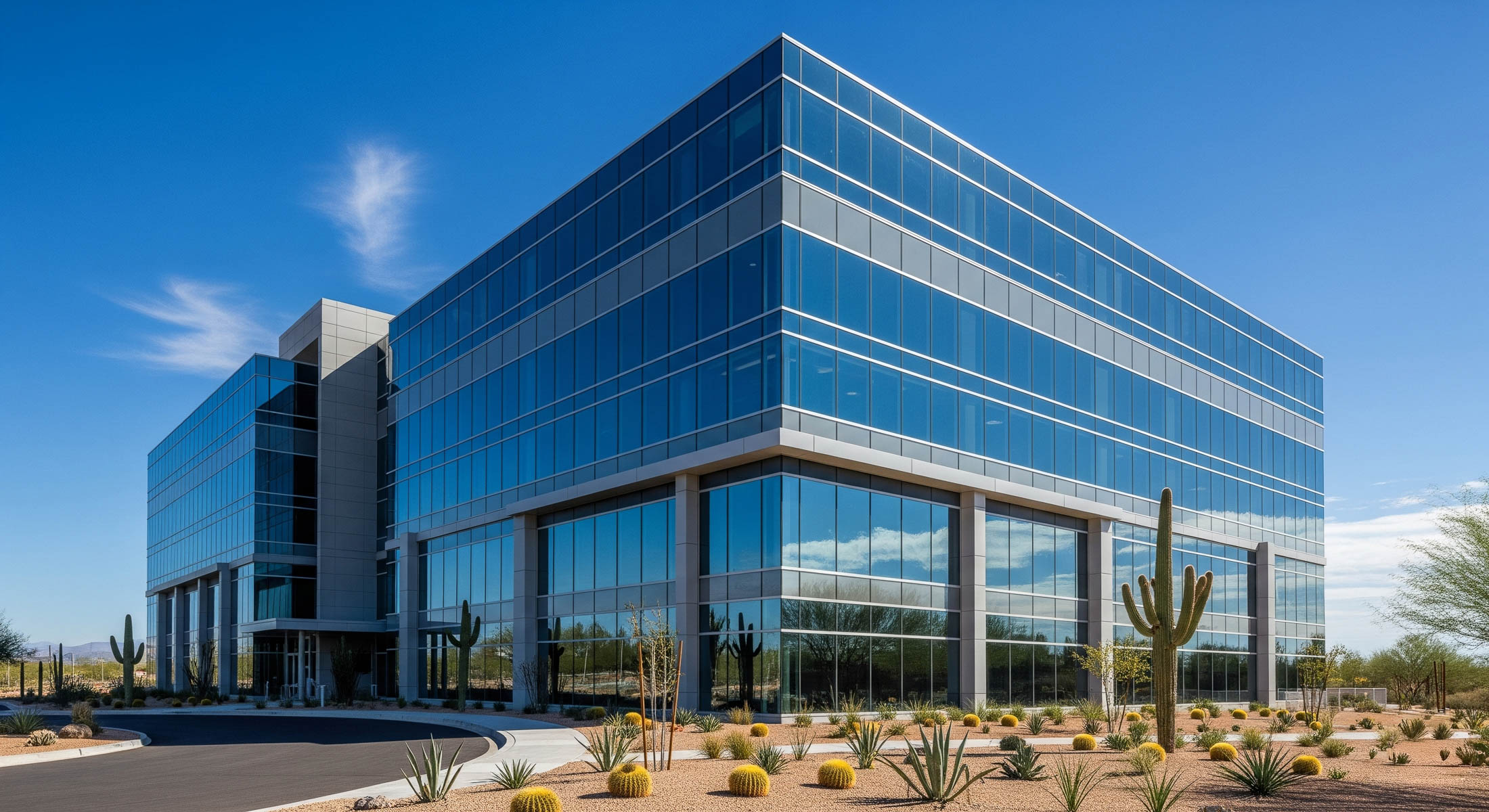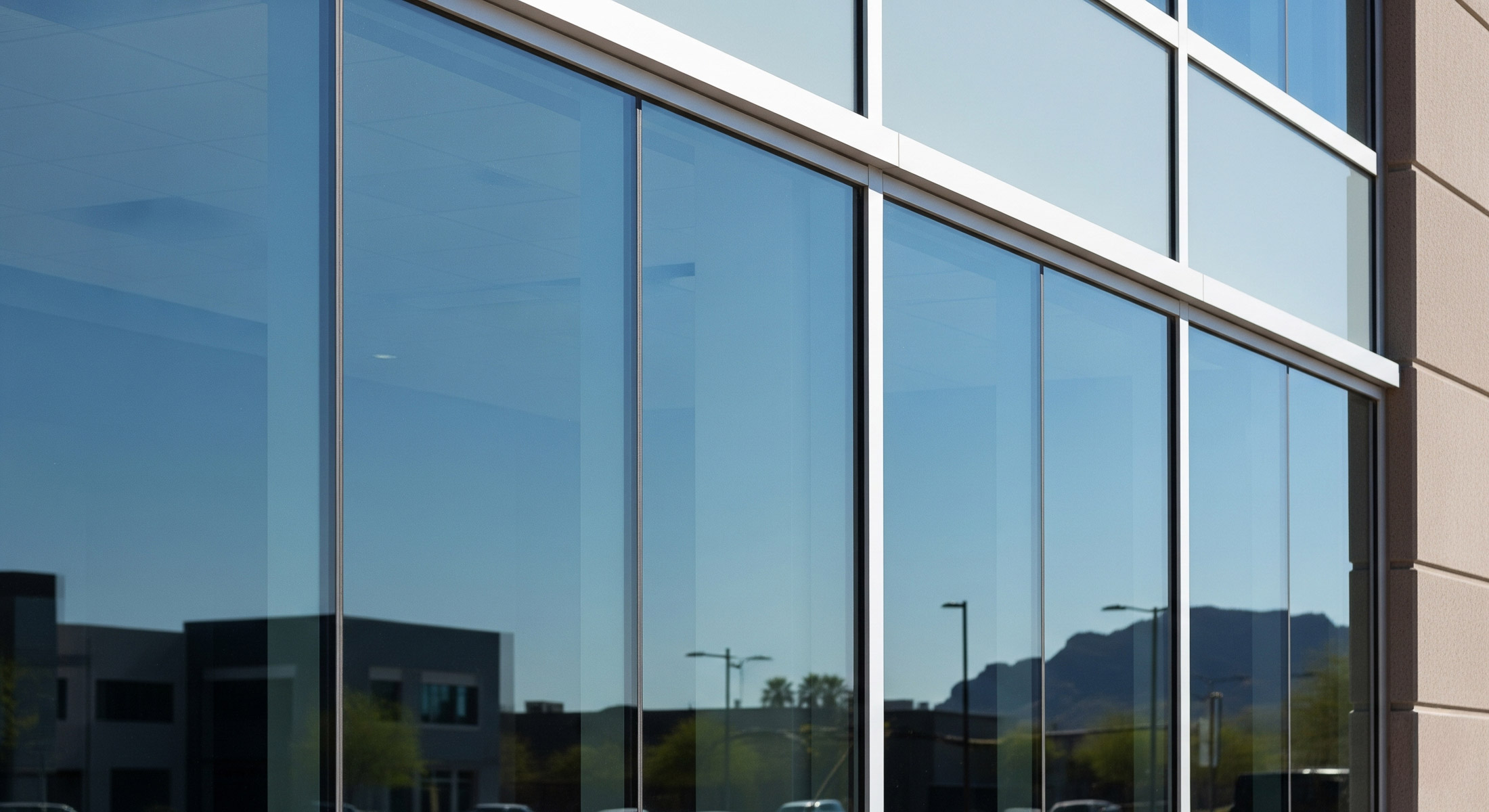
Understanding Low-E Glass in Commercial Glazing
What Building Owners and General Contractors in California and Arizona Need to Know
In today’s commercial construction market, energy efficiency is no longer a bonus; it’s an expectation. With building codes tightening and energy costs rising across California and Arizona, choosing the right glass is one of the most effective ways to improve performance and reduce long-term operating expenses. One of the most common solutions is Low-E glass.
If you’re planning a commercial project or managing an existing building, understanding what Low-E glass does and when it makes sense is essential.

Low-E (low emissivity) glass features a microscopically thin, transparent coating applied to one surface of the glass. This coating reflects infrared (heat) energy while allowing visible light to pass through.
In simple terms, it helps buildings stay cooler in hot weather and warmer in cooler seasons, depending on how the glass is specified and installed.
There are two main types:
1. Energy Savings
2. Enhanced Comfort for Tenants
3. UV Protection
4. Versatile Appearance Options
Can be combined with laminated or insulated glass for multi-function performance

Low-E glass is ideal for commercial projects such as:
It is especially valuable in desert and coastal regions, where sun exposure and heat gain can impact building performance year-round.
At Ramos Industries, Inc., we work with architects and general contractors to match the correct Low-E specification to the project’s climate, orientation, and energy goals.
Before selecting Low-E glass, consider the following:
Ramos Industries delivers code-compliant, high-performance glazing solutions for office buildings, retail centers, public agencies, and more. We regularly source and install Low-E glass from top fabricators and work closely with our clients to ensure every system is field-verified, properly sealed, and correctly oriented.
We also support glazing upgrades and replacements in existing buildings looking to improve energy ratings or tenant experience.
Low-E glass is a smart, future-focused solution that boosts building performance without sacrificing design.
Visit www.ramosindustriesinc.com to explore our glazing capabilities or contact us today to request a consultation for your next commercial project in California or Arizona.